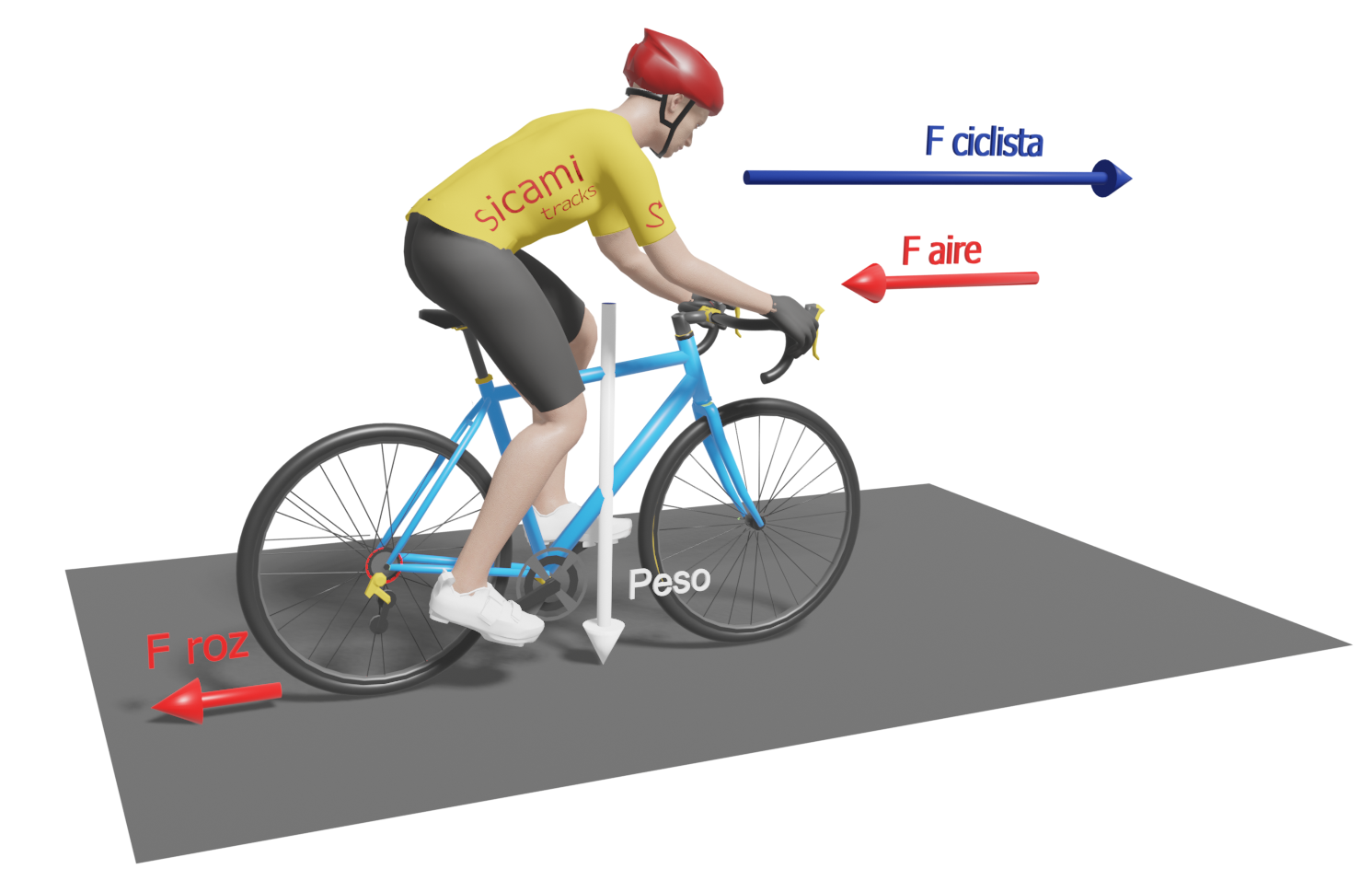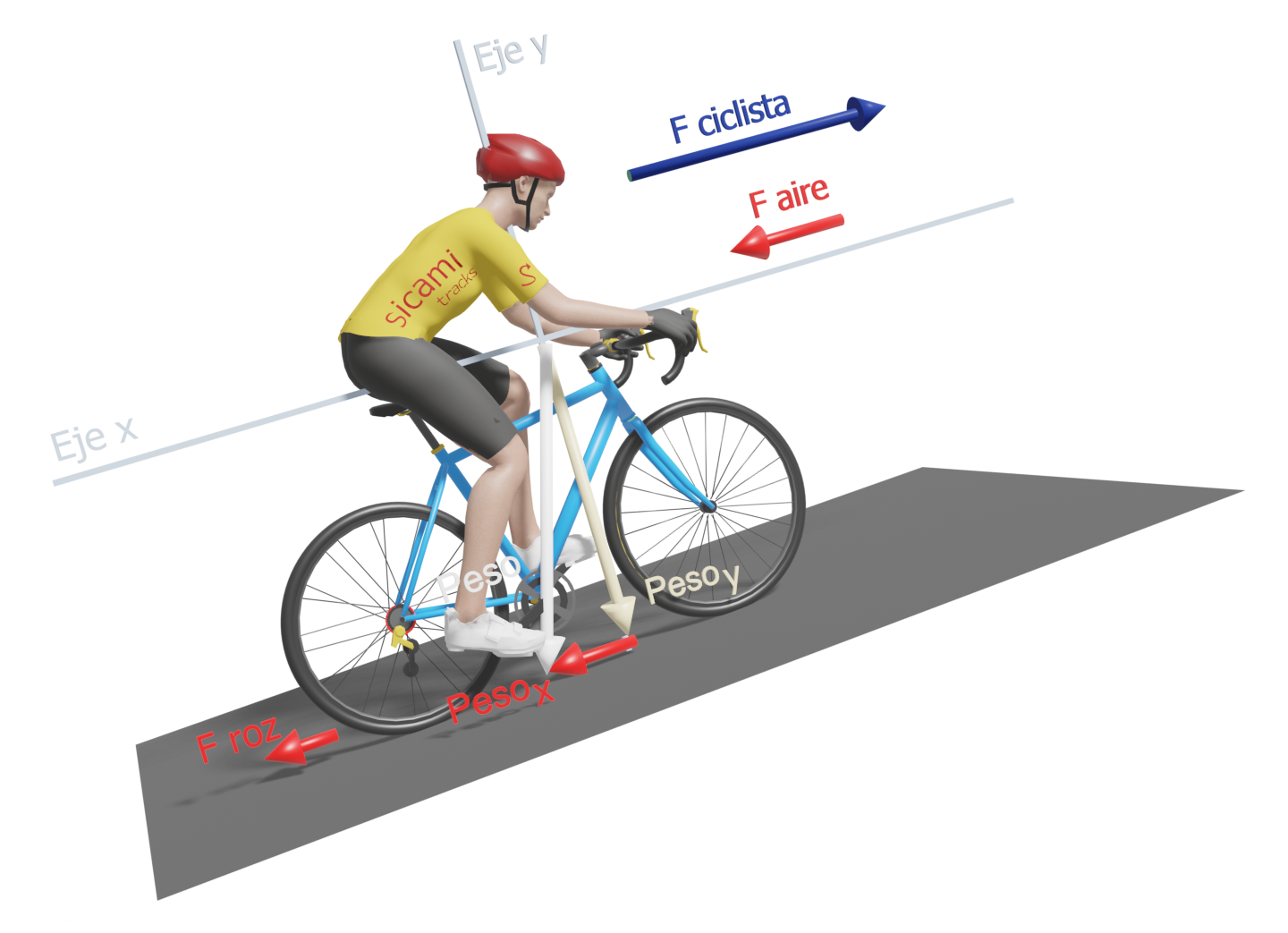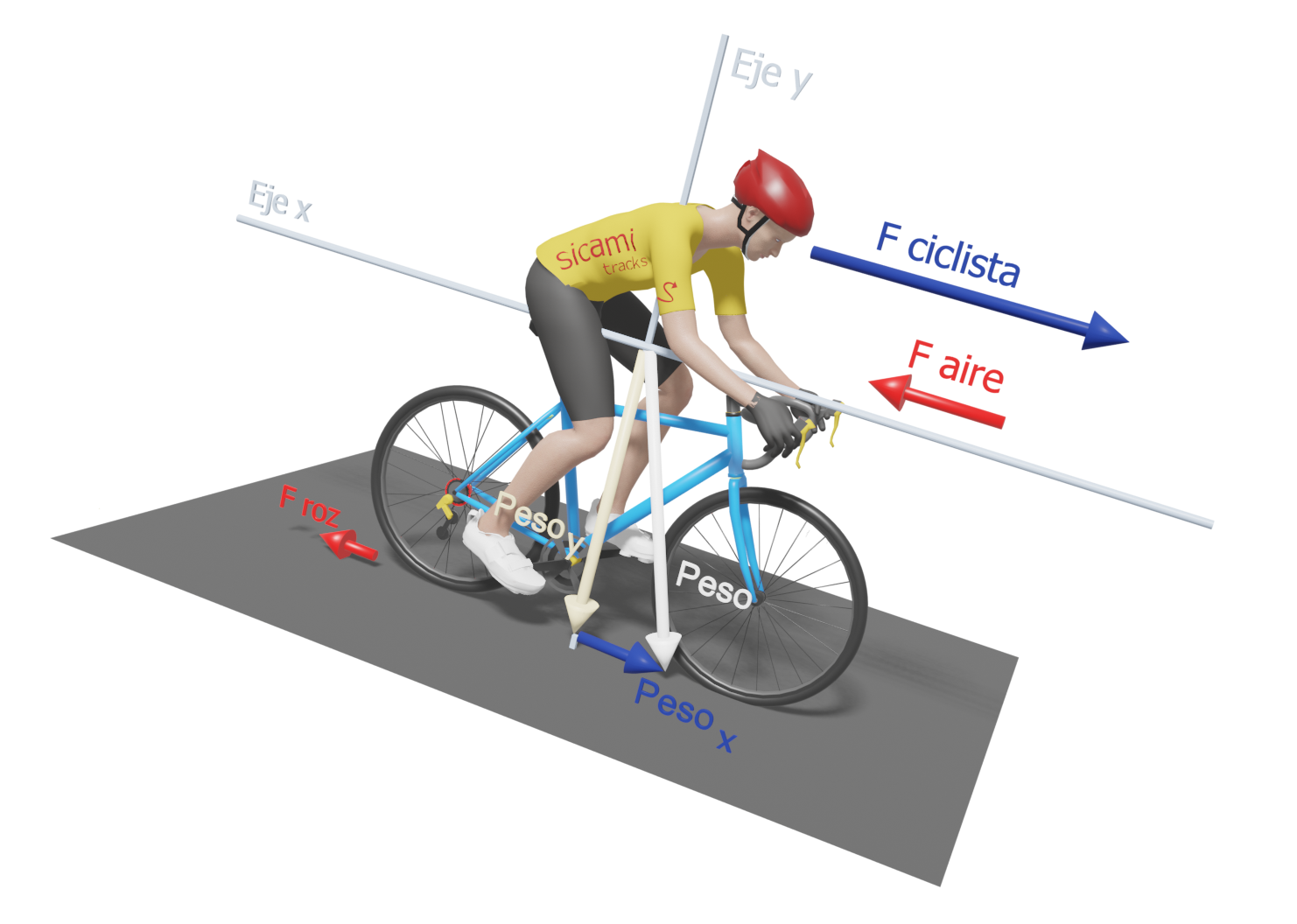Date: 09/12/2023 Auteur: Antonio H.
Forces on the cyclist and the bicycle. Basic notions
When we ride a bicycle, various forces act on us. If we focus on forward motion, the most significant ones for reaching and maintaining a certain speed are the following.
- Air resistance or aerodynamic drag
- Rolling resistance (friction of the wheels on the ground)
- Gravitational pull force (due to the weight of the bicycle-cyclist combination)
- Acceleration force (only when there is a change of speed, it does not exist at constant speed).
- Marginal forces: Friction of the chain, gears and bearings, bending losses of the frame, etc.
These are the five main forces that must be overcome to reach and maintain a certain speed. The marginal forces are not considered in the following, but are minimised by correct maintenance and lubrication. The final state of the movement will depend on the difference between the forces in the direction of displacement and the forces in the opposite direction of displacement.
Cyclist riding on the flat
The two most important resistance forces that a cyclist must overcome when riding on the flat are rolling resistance and aerodynamic resistance.

Rolling resistance results from the friction between the wheels and the ground and is determined by the characteristics of the tyres and the terrain.
Aerodynamic resistance is the resistance offered by the air opposing movement. It will be determined mainly by our speed, the wind speed and the angle between the wind direction and our direction of travel. It will also be determined by the frontal area occupied by us and our bicycle.
When we study the formulas that allow the calculation, we will see that the force of air resistance is directly proportional to the frontal area of the bicycle-cyclist combination, i.e. it increases linearly with the frontal area. However, the relationship with the speed relative to the wind is exponential, as it is proportional to the square of the wind speed. This means that as speed increases, the force required to overcome wind resistance will increase exponentially.
For example: if we ride on the flat, with no wind and at a speed of 15 km/h, the force we apply will be used approximately equally to overcome rolling resistance and aerodynamic resistance. If we double the speed to 30 km/h, 75% of the force exerted will go to overcome aerodynamic drag and only a quarter to overcome rolling resistance. If we increase the speed by a further 10 km/h, reaching 40 km/h, the percentage of force going to overcome aerodynamic drag will reach 90% (Di prampero et al., 2000; Debraux, Grappe, Manolova, & Bertucci, 2011).
We can conclude that air is the biggest obstacle we will encounter when riding on flat stretches, and it will be greater the higher our speed and the greater the wind speed and direction, hence the importance of adopting measures to improve our aerodynamics.
The force of
gravity, determined by the weight of the cyclist-bicycle combination, will always act towards the centre of the earth, so in this case it will be perpendicular to our displacement and will not noticeably affect our movement, except in the moments when we accelerate or reduce our speed (
Newton's 2nd law).
Finally, the acceleration force is the force we must exert to increase our speed. This force, necessary to accelerate, will be greater the greater the mass of the bicycle-cyclist combination, but once we are moving at a constant speed (
Newton's 1st law), the only forces to overcome will be rolling resistance and aerodynamic resistance.
Cyclist ascending
When pedalling uphill, aerodynamic resistance becomes less important in favour of the force of gravity, which is determined by the weight of the cyclist-bicycle combination.

But not all of our weight will oppose the forward movement. To see this more clearly, we can set up a coordinate system with the x-axis parallel to the ground and the y-axis perpendicular. The total weight will point towards the centre of the earth, but we can break it down into two components according to each of the established coordinate axes. Thus we will obtain a component on the y-axis, "y-weight" (perpendicular to the ground) and another on the x-axis, "x-weight" (parallel to the ground). This last component parallel to the ground is the part of our weight that actually opposes our upward movement.
Cyclist descending
In the case of descents, the "x-weight" component will point in the direction of movement and will therefore be added to the weight we exert when pedalling, facilitating forward movement. The steeper the slope of the descent, the greater the value of "x-weight". We will be able to stop pedalling when this force exceeds the value of the sum of the forces opposite to the direction of movement.

In future articles we will expand and deepen all these concepts.


